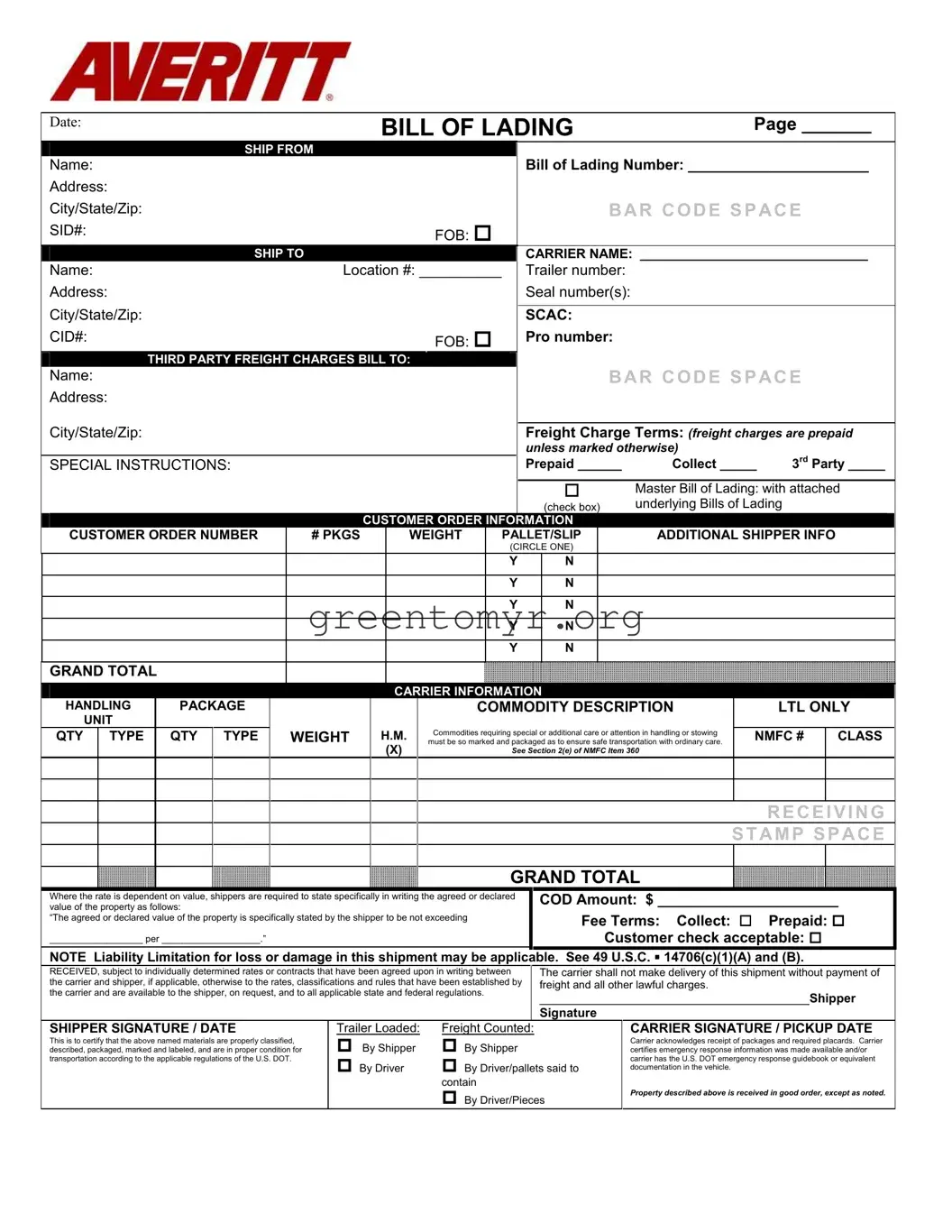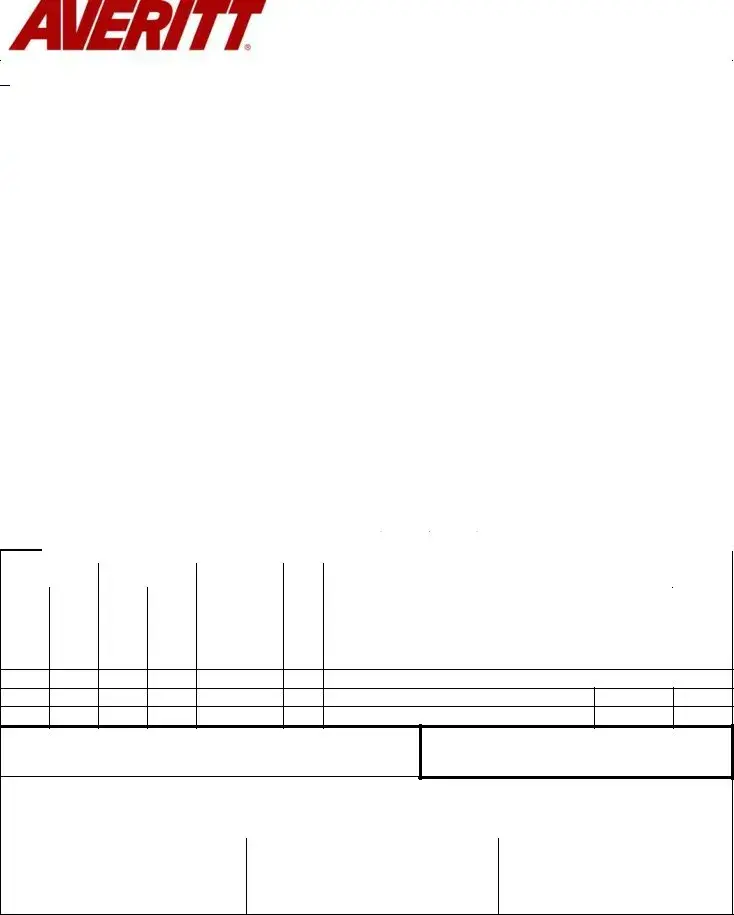When completing the Bill of Lading Averitt form, people often overlook essential fields, which can lead to complications. One common mistake is failing to provide a complete and accurate ship from address. This includes missing the city, state, or zip code, which can result in delays in shipment or misdelivery.
Another frequent error occurs in the ship to section. Individuals sometimes forget to include the carrier's name or fail to specify the location and trailer number. This information is critical for ensuring that the shipment reaches the correct destination.
Many users also neglect to fill out the pro number. This tracking number is vital for both the shipper and the carrier to monitor the shipment's status. Without it, locating the shipment may be challenging.
In the section on third-party freight charges, mistakes can occur when shippers do not clearly indicate whether charges are prepaid, collect, or billed to a third party. This omission can lead to confusion regarding payment responsibilities and may cause disputes later on.
Completing the customer order information section can pose a challenge as well. Often, individuals omit the customer order number, quantity, or weight of the packages. Accurate information here is essential for processing and fulfilling the order correctly.
In some cases, shippers fail to mark commodities that require special care. The section for H.M. commodities is critical for ensuring safe transportation. If this is overlooked, it may result in mishandling and potential damage to goods.
People sometimes skip the agreed or declared value statement, which is a vital component when the rate depends on the value of the property. Without this declaration, the shipper may inadvertently limit their liability in case of loss or damage.
Another area susceptible to errors is the signature section. Individuals may forget to sign the document or neglect to include dates. Not having a proper signature can lead to challenges regarding the validity of the document.
In the signature field, it is crucial to ensure the carrier’s and shipper’s signatures are included and properly dated. Bypassing this step can complicate matters should a dispute arise about the shipment.
Lastly, care should be taken with the emergency response information. Some users fail to affirm that the emergency response guidebook is available in the vehicle. This oversight may pose risks in case of an incident during transport.

